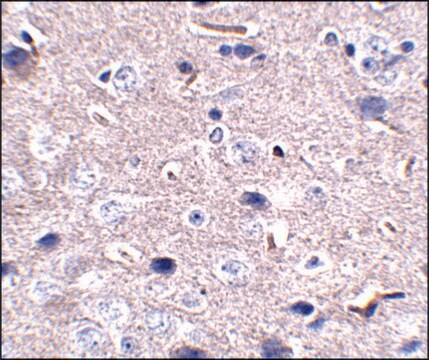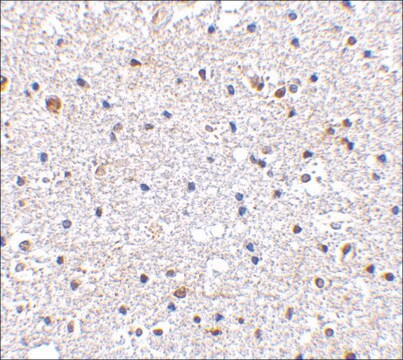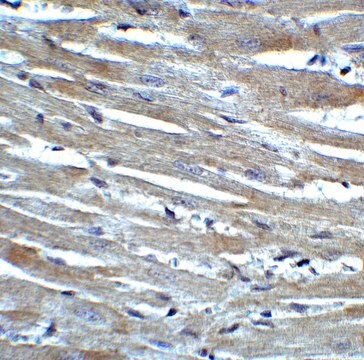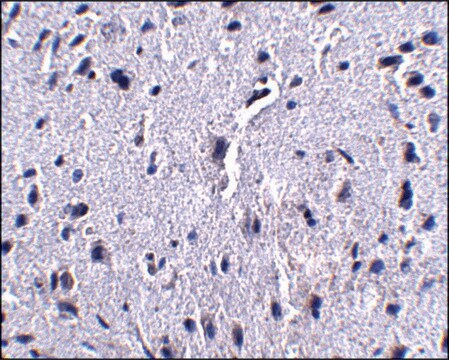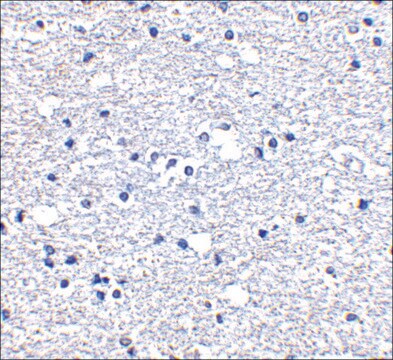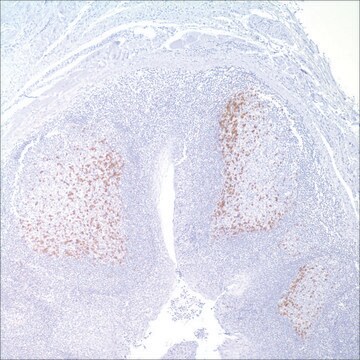MABC1122
Anti-PD-1 Antibody, clone EH33
clone EH33.1F9.G4.5, from mouse
Synonyme(s) :
Programmed cell death protein 1, hPD-1, CD279
About This Item
Produits recommandés
Source biologique
mouse
Niveau de qualité
Forme d'anticorps
purified immunoglobulin
Type de produit anticorps
primary antibodies
Clone
EH33.1F9.G4.5, monoclonal
Espèces réactives
human
Conditionnement
antibody small pack of 25 μg
Technique(s)
immunohistochemistry: suitable (paraffin)
Isotype
IgG2aκ
Numéro d'accès NCBI
Numéro d'accès UniProt
Modification post-traductionnelle de la cible
unmodified
Informations sur le gène
human ... PDCD1(5133)
Catégories apparentées
Description générale
Spécificité
Immunogène
Application
Inflammation & Immunology
Qualité
Immunohistochemistry Analysis: A 1:250 dilution of this antibody detected PD-1 in human tonsil and human bone marrow tissues.
Description de la cible
Forme physique
Stockage et stabilité
Autres remarques
Clause de non-responsabilité
Vous ne trouvez pas le bon produit ?
Essayez notre Outil de sélection de produits.
En option
Code de la classe de stockage
12 - Non Combustible Liquids
Classe de danger pour l'eau (WGK)
WGK 1
Point d'éclair (°F)
Not applicable
Point d'éclair (°C)
Not applicable
Certificats d'analyse (COA)
Recherchez un Certificats d'analyse (COA) en saisissant le numéro de lot du produit. Les numéros de lot figurent sur l'étiquette du produit après les mots "Lot" ou "Batch".
Déjà en possession de ce produit ?
Retrouvez la documentation relative aux produits que vous avez récemment achetés dans la Bibliothèque de documents.
Notre équipe de scientifiques dispose d'une expérience dans tous les secteurs de la recherche, notamment en sciences de la vie, science des matériaux, synthèse chimique, chromatographie, analyse et dans de nombreux autres domaines..
Contacter notre Service technique